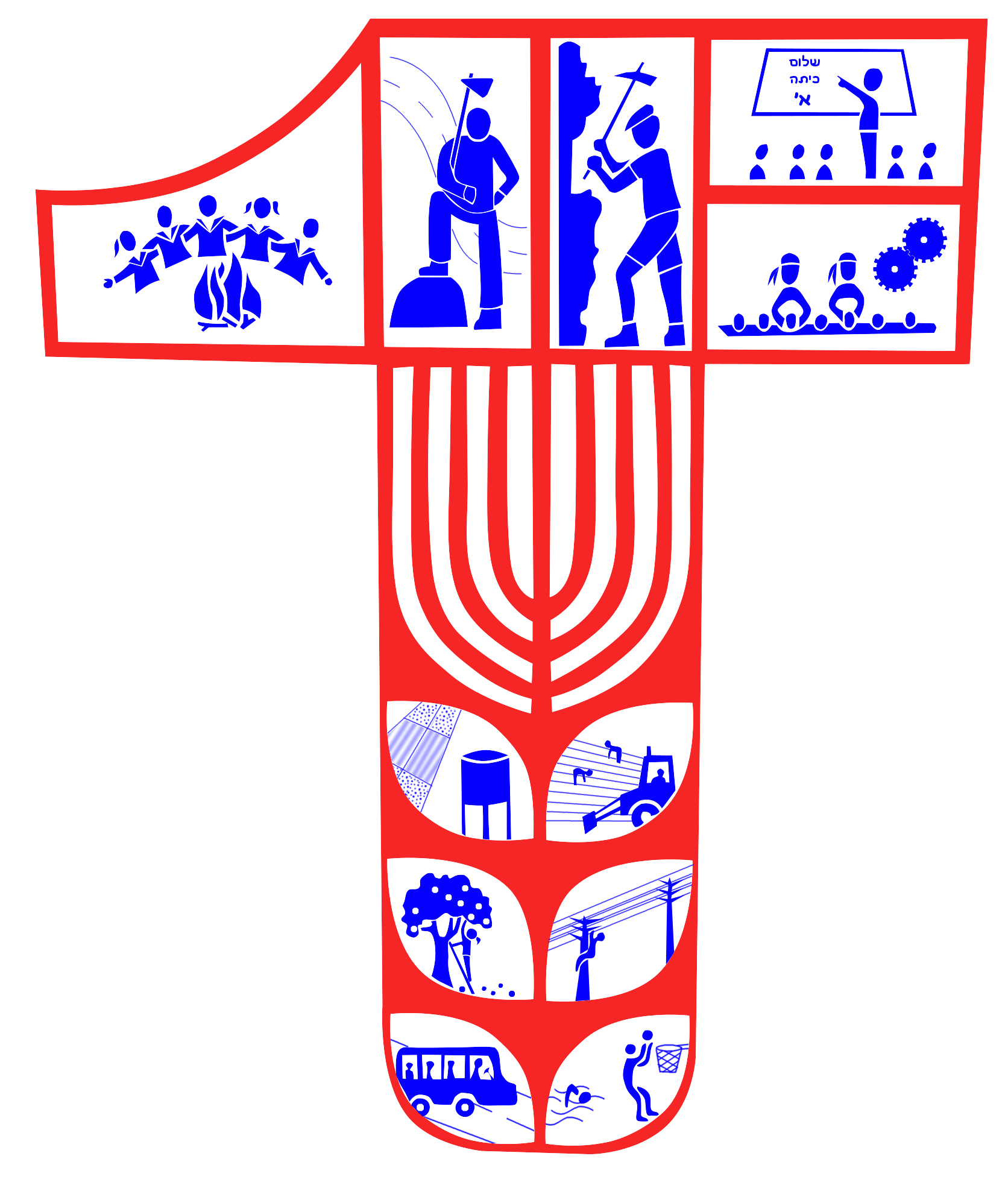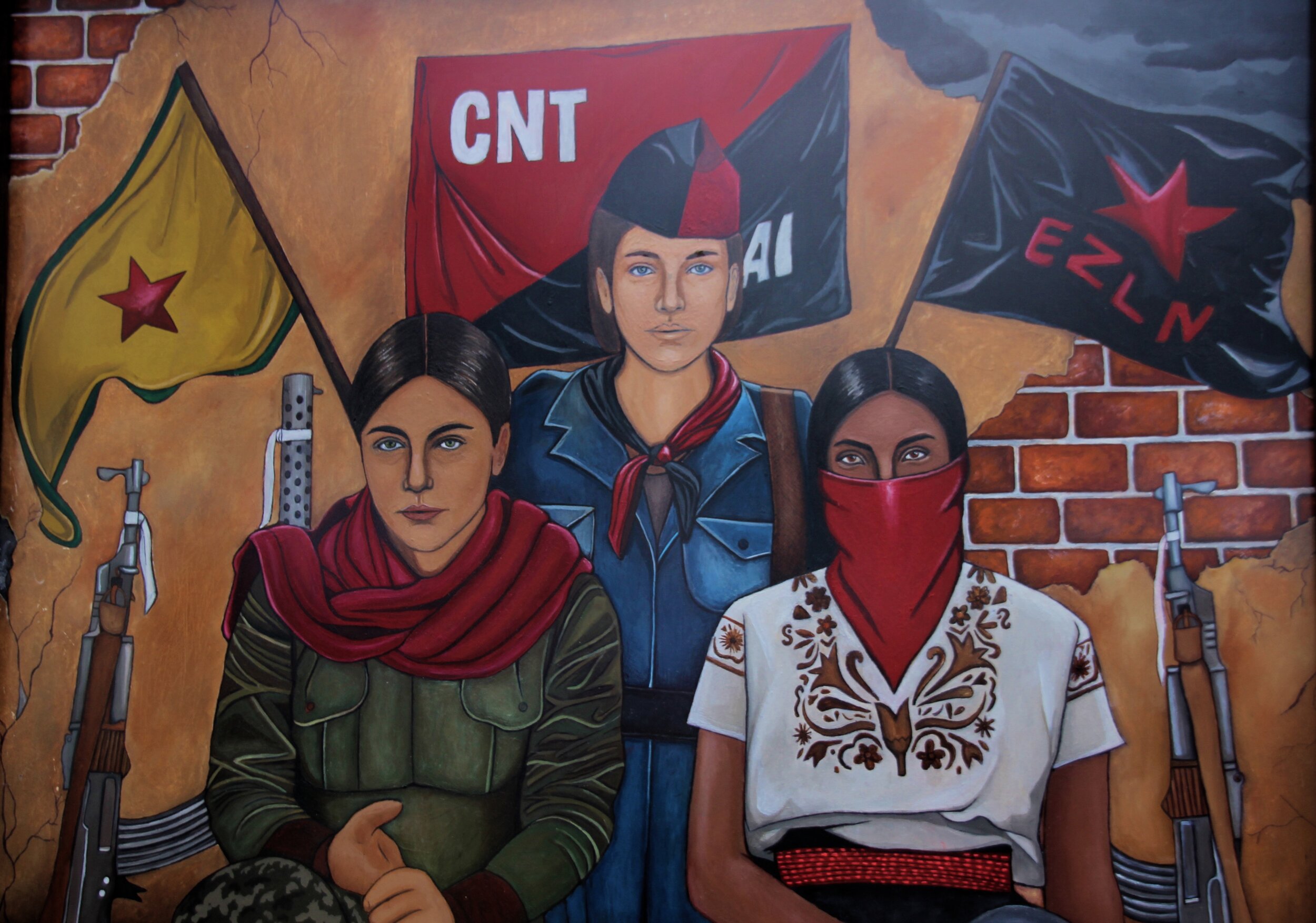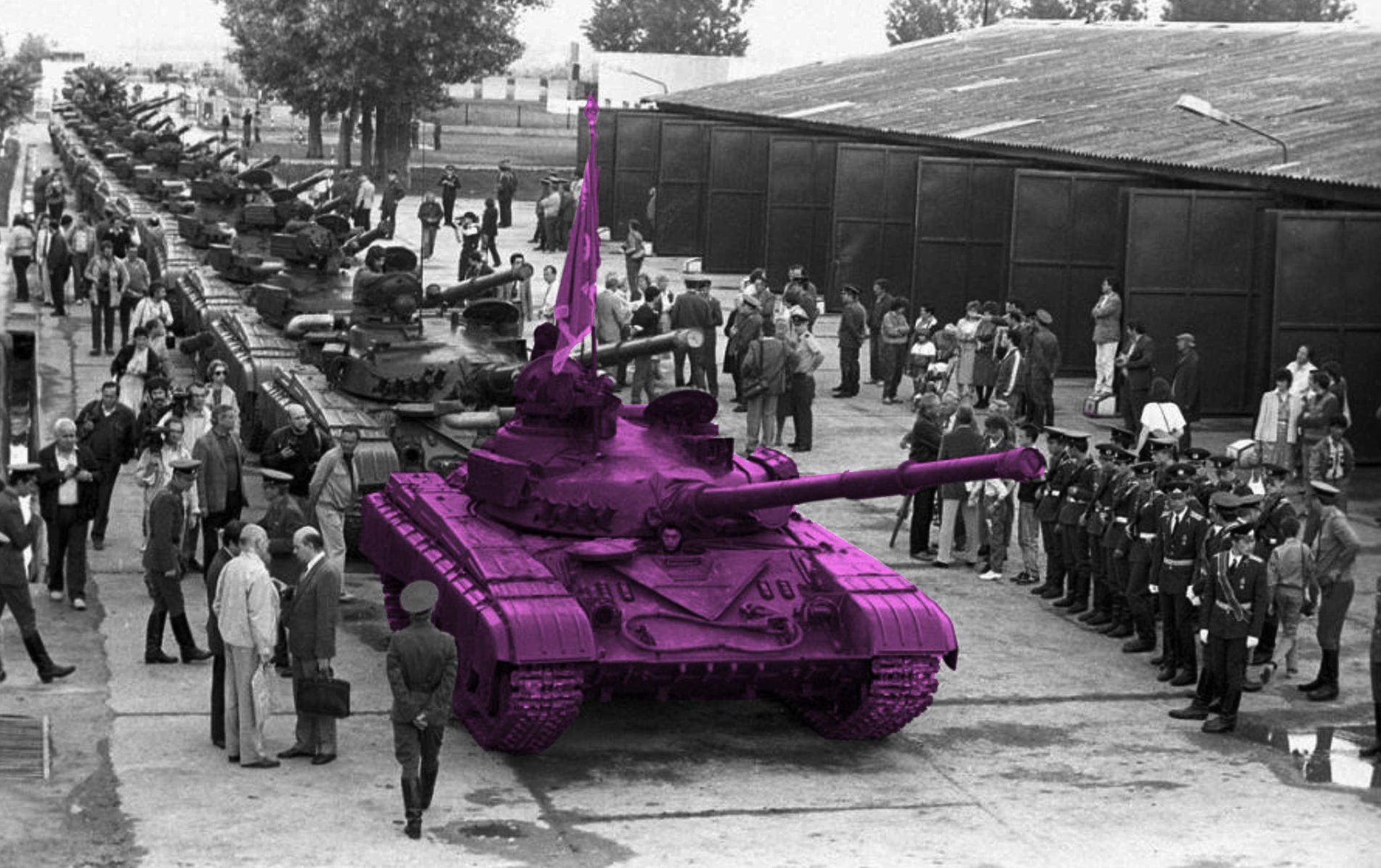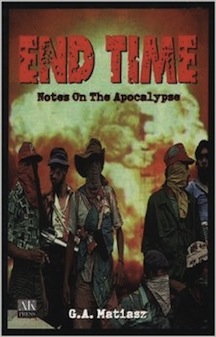 I had an unquestioned moral certitude early in life. I was a pacifist for a New York minute in 1968. To create a peaceful world I believed you needed to practice nonviolence. I was a left anarchist for some two decades. To realize an anti-authoritarian society I believed you needed to use anarchistic organizational methods. I was an anti-state communist for another two decades. To implement a revolutionary defeatism I believed you needed to demand no war but the class war. I subscribed to a kind of political homeopathy, a theory of treating “like with like.” It was the classic “ ends and means” discussion from a purist perspective.
I had an unquestioned moral certitude early in life. I was a pacifist for a New York minute in 1968. To create a peaceful world I believed you needed to practice nonviolence. I was a left anarchist for some two decades. To realize an anti-authoritarian society I believed you needed to use anarchistic organizational methods. I was an anti-state communist for another two decades. To implement a revolutionary defeatism I believed you needed to demand no war but the class war. I subscribed to a kind of political homeopathy, a theory of treating “like with like.” It was the classic “ ends and means” discussion from a purist perspective.
Those who pursue political purity rarely attain their goals however. Mahatma Gandhi played a part in the horrific intercommunal riots between Muslims and Hindus when India and Pakistan sundered the subcontinent thanks to British colonial disentanglement in 1947. Spanish anarchists perpetrated repressive massacres in seeking revenge against the autocratic Spanish clergy, aristocracy and bourgeoisie during the 1936-39 civil war. The mutinous troops and largely failed social revolutions from the first World War continued the process of reducing much of Europe to rubble. Given humanity’s violent history I’m prone to see pacifism, anarchism and revolutionary defeatism as half-baked forms of idealism, misplaced theories that never become reality beyond a year or two of blood and slaughter.
 My last three columns focus on the strategy of revolutionary defeatism that emerged from the near global conflict between the Allied and Central European powers and their colonial empires from 1914 through 1918. Defeatism was embraced by the minority international socialist tendency of the disbanded social democratic Second International that espoused true internationalism, anti-militarism and radical class struggle. They opposed social revolution to war and advocated fighting against “one’s own” bourgeoisie and nation, turning their guns against their leaders. The OG Zimmerwald defeatists asserted the international proletariat could not win in a capitalist war. The true enemy of the proletariat were the imperialist leaders who send their lower classes into battle. Workers gained most from their own nation’s defeats if the war could be turned into civil war and then international revolution. Today, revolutionary defeatism is being touted by class war anarchists, anti-state communists and revolutionary internationalists.
My last three columns focus on the strategy of revolutionary defeatism that emerged from the near global conflict between the Allied and Central European powers and their colonial empires from 1914 through 1918. Defeatism was embraced by the minority international socialist tendency of the disbanded social democratic Second International that espoused true internationalism, anti-militarism and radical class struggle. They opposed social revolution to war and advocated fighting against “one’s own” bourgeoisie and nation, turning their guns against their leaders. The OG Zimmerwald defeatists asserted the international proletariat could not win in a capitalist war. The true enemy of the proletariat were the imperialist leaders who send their lower classes into battle. Workers gained most from their own nation’s defeats if the war could be turned into civil war and then international revolution. Today, revolutionary defeatism is being touted by class war anarchists, anti-state communists and revolutionary internationalists.
According to Hal Draper per his The Myth of Lenin’s “Revolutionary Defeatism” however Vladimir Lenin abandoned defeatism early on due to sectarianism, correct Marxist analysis, Russian feudal history, and a consistent revolutionary anti-war position. Draper further argued that even the non-Bolshevik anti-war socialist-internationalists like Leon Trotsky and Rosa Luxemburg were not defeatist, but rather Third Campist. They insisted that the international working class remain opposed to either side of any imperialist war and constitute itself an independently organized, autonomous Third Camp seeking not defeat but “the victory of their own working class struggle for socialism.” For Lenin, Luxemburg and Trotsky the goal was winning socialism for the working class. Lenin put forward a “variety of shifting and inconsistent formulations on ‘defeatism’ at various times,” but we’re interested in “the canonical form of ‘defeatism’” codified as Leninism and adopted by defeatists today.
 The history of revolutionary defeatism is at best one of Pyrrhic victories. The Russians lost 1,500,000 civilians and 1,811,000 military casualties during the first World War. After two revolutions the Bolsheviks forced Russia to withdraw from the war, but the revolutionary defeatist wave of the working classes across Europe did not stop the war. It contributed to the collapse of the Central Powers’ war effort, but the Allied Powers continued fighting unabated. The rebellions were all brutally crushed by their respective ruling classes, eventually giving rise to Fascism in their stead. Sadly, the failed troop mutinies and aborted European social revolutions are socialist heroes and martyrs minus the socialist victories. Most occurred only at a horrific cost to the working class itself. This hasn’t stopped the current crop of revolutionary defeatists from converting the dubious history of defeatism into a transhistoric principle, a new orthodoxy and an old myth: “Then of course we remember that at the start of the First World War, the revolutionaries were a tiny minority. Yet four years later they stopped the war.”
The history of revolutionary defeatism is at best one of Pyrrhic victories. The Russians lost 1,500,000 civilians and 1,811,000 military casualties during the first World War. After two revolutions the Bolsheviks forced Russia to withdraw from the war, but the revolutionary defeatist wave of the working classes across Europe did not stop the war. It contributed to the collapse of the Central Powers’ war effort, but the Allied Powers continued fighting unabated. The rebellions were all brutally crushed by their respective ruling classes, eventually giving rise to Fascism in their stead. Sadly, the failed troop mutinies and aborted European social revolutions are socialist heroes and martyrs minus the socialist victories. Most occurred only at a horrific cost to the working class itself. This hasn’t stopped the current crop of revolutionary defeatists from converting the dubious history of defeatism into a transhistoric principle, a new orthodoxy and an old myth: “Then of course we remember that at the start of the First World War, the revolutionaries were a tiny minority. Yet four years later they stopped the war.”
Buenaventura Durruti, the revolutionary anarchist-syndicalist member of the CNT/FAI and workers’ militia leader once commented that:
We have always lived in slums and holes in the wall. We will know how to accommodate ourselves for a while. For you must not forget that we can also build. It is we who built these palaces and cities, here in Spain and America and everywhere. We, the workers. We can build others to take their place. And better ones. We are not in the least afraid of ruins. We are going to inherit the earth; there is not the slightest doubt about that. The bourgeoisie might blast and ruin its own world before it leaves the stage of history. We carry a new world here, in our hearts. That world is growing in this minute.
 First, consider the death toll. As the Red Army battled the combined White Armies during the civil war from 1917 to 1923 Russia experienced a loss of 7 to 12 million mostly civilian casualties. Forty million civilians and military personnel died during the first World War, fifty-three million perished during the second World War and twenty-five million expired during the Cold War. Given another fifteen to twenty million snuffed out since the collapse of the Soviet Union and we’re still left with a planet overwhelmingly dominated by capitalism and the bourgeoisie. Durruti’s “new world in our hearts” promised by the Russian Revolution, Soviet bloc, and attendant Third World national liberation movements never materialized. Most in the present internationalist, anti-militarist, revolutionary defeatist bloc would consider that vision flawed from the start, a faux utopia betrayed by vanguardism and nationalism. And what does it mean if Durruti’s ruins are ultimately radioactive, infectious or poisonous?
First, consider the death toll. As the Red Army battled the combined White Armies during the civil war from 1917 to 1923 Russia experienced a loss of 7 to 12 million mostly civilian casualties. Forty million civilians and military personnel died during the first World War, fifty-three million perished during the second World War and twenty-five million expired during the Cold War. Given another fifteen to twenty million snuffed out since the collapse of the Soviet Union and we’re still left with a planet overwhelmingly dominated by capitalism and the bourgeoisie. Durruti’s “new world in our hearts” promised by the Russian Revolution, Soviet bloc, and attendant Third World national liberation movements never materialized. Most in the present internationalist, anti-militarist, revolutionary defeatist bloc would consider that vision flawed from the start, a faux utopia betrayed by vanguardism and nationalism. And what does it mean if Durruti’s ruins are ultimately radioactive, infectious or poisonous?
I started by relating my naive youthful commitment to principles, purity and moralism through my involvement in pacifism, left anarchism and anti-state communism. Libcom, RevLeft, Insurgent Notes and similar forums are replete with essays, articles and declarations insisting that defeatism requires a commitment to principles, purity and moralism and is the only true revolutionary political strategy. Certainly their conflation of means with ends is similar. Yet in my opinion the need for an effective radical praxis remains. I’ve talked in the past about a disingenuous “diversity of tactics” that nevertheless fails to square the circle of means and ends or assuage the brutality of realpolitik. The Long 60s developed a pragmatic baseline politics of survival that countered oppression based on Malcolm X’s catchphrase “by any means necessary.” Ultimately, its become my go-to stance for politics beyond equating means with ends.
 If revolutionary defeatism during its prime (1917-1922) is considered a success by its present-day proponents, we unfortunately know what failure looks like. There are two mid-sized wars (Russia/Ukraine, Israel/Palestine) and dozens of spot conflicts (Yemen, Syria, Iraq, Pakistan, Burma, Mali, Burkina Faso, Myanmar, et al) around the globe today. No major wars, no regional conflicts, and no world wars. Yet the advocates for revolutionary defeatism adhere to their orthodoxy and treat every conflict as if Lenin were declaring the April Theses. Civil war not civil peace! Revolutionary defeatism against all bourgeoisie! Not one tank for Ukraine!
If revolutionary defeatism during its prime (1917-1922) is considered a success by its present-day proponents, we unfortunately know what failure looks like. There are two mid-sized wars (Russia/Ukraine, Israel/Palestine) and dozens of spot conflicts (Yemen, Syria, Iraq, Pakistan, Burma, Mali, Burkina Faso, Myanmar, et al) around the globe today. No major wars, no regional conflicts, and no world wars. Yet the advocates for revolutionary defeatism adhere to their orthodoxy and treat every conflict as if Lenin were declaring the April Theses. Civil war not civil peace! Revolutionary defeatism against all bourgeoisie! Not one tank for Ukraine!
I openly support the Ukrainian people against Russian imperialism and I’m unapologetically pro-Jewish, anti-Israeli state, pro-Palestinian, and anti-Hamas armed party in the Israel/Palestine conflict. I’m also against US imperialism and NATO expansionism. I’m not concerned with political purity or finding a politically correct algorithm for revolutionary demands. In part that’s because of the sectarianism that such pursuit of principles engenders even among die-hard class war leftists. It’s been eighty-seven years after the Condor Legion of Nazi Germany’s Luftwaffe and the Italian Aviazione Legionaria bombed the town of Guernica into oblivion to demonstrate the effects of total warfare. The destructive power and genocidal potential of modern warfare has only multiplied exponentially. The capacity to proliferate a Nazi Holocaust or Cambodian genocide has never been greater. Little wonder that Ukrainians and Palestinians are worried about being annihilated by an enemy that will not be fazed by their attempts at revolutionary defeatism.
 But Class War/Třídní Válka in Milan, Italy reveals how skewed the revolutionary defeatist orthodoxy is. “We support the need for defeatism in the ongoing war in Ukraine, against Russian imperialism and against the US/Europe/NATO imperialist bloc, against the prospect of a global, inter-capitalist war, starting from this war.” Yet Třídní Válka stands “on the side of the Palestinian masses” and “against the ethnic cleansing of Palestine,” in that the “Western ‘democratic world’ is collaborating in the erasure of the very existence of the Palestinians.”
But Class War/Třídní Válka in Milan, Italy reveals how skewed the revolutionary defeatist orthodoxy is. “We support the need for defeatism in the ongoing war in Ukraine, against Russian imperialism and against the US/Europe/NATO imperialist bloc, against the prospect of a global, inter-capitalist war, starting from this war.” Yet Třídní Válka stands “on the side of the Palestinian masses” and “against the ethnic cleansing of Palestine,” in that the “Western ‘democratic world’ is collaborating in the erasure of the very existence of the Palestinians.”
I argued last column that national liberation struggles, while ostensibly independent and socialist, share most of the same features of bourgeois nationalism and empire. Both consider the nation-state the be-all-and-end-all in its founding, defense, and expansion; both suppress or conceal class divisions beneath nationalism and nationality; both lend in the formation of the national or global bourgeoisie; and both serve the interests of the ruling class. These common features of all nationalisms are precisely what left anarchists, anti-state communists and revolutionary internationalists—our present-day defeatists—should categorically reject. Either the international working class is united and one and it’s “no war but the class war.” Or special dispensation is made for the most ethnically oppressed among the proletariat.
 Politics based on pragmatism, contingency and the practical details of any given scenario are par for the course. I’m much more interested in revolutionary socialist strategy, but unfortunately this discussion has been singularly bereft of both successful revolution and socialism. The “like treats like” political homeopathy I began with is looking more like magical, ineffectual thinking. That usually means I have a lot more analyzing to do. More to the point, what needs to be considered is the suicidal consequences of defeatism as a strategy, best exemplified by the routed German Revolution of 1918-1919. That’s when on January 15, 1919 Luxemburg and Karl Liebknecht were assassinated and martyred by the proto-Fascist paramilitary Freikorps. This was typical of the fate of the defeatist efforts to stop the war in general. Far from “blaming the victims” I hope to challenge what I consider to be a losing anti-militarist strategy. We need to take seriously the task of winning the revolutionary struggle for socialism.
Politics based on pragmatism, contingency and the practical details of any given scenario are par for the course. I’m much more interested in revolutionary socialist strategy, but unfortunately this discussion has been singularly bereft of both successful revolution and socialism. The “like treats like” political homeopathy I began with is looking more like magical, ineffectual thinking. That usually means I have a lot more analyzing to do. More to the point, what needs to be considered is the suicidal consequences of defeatism as a strategy, best exemplified by the routed German Revolution of 1918-1919. That’s when on January 15, 1919 Luxemburg and Karl Liebknecht were assassinated and martyred by the proto-Fascist paramilitary Freikorps. This was typical of the fate of the defeatist efforts to stop the war in general. Far from “blaming the victims” I hope to challenge what I consider to be a losing anti-militarist strategy. We need to take seriously the task of winning the revolutionary struggle for socialism.









































